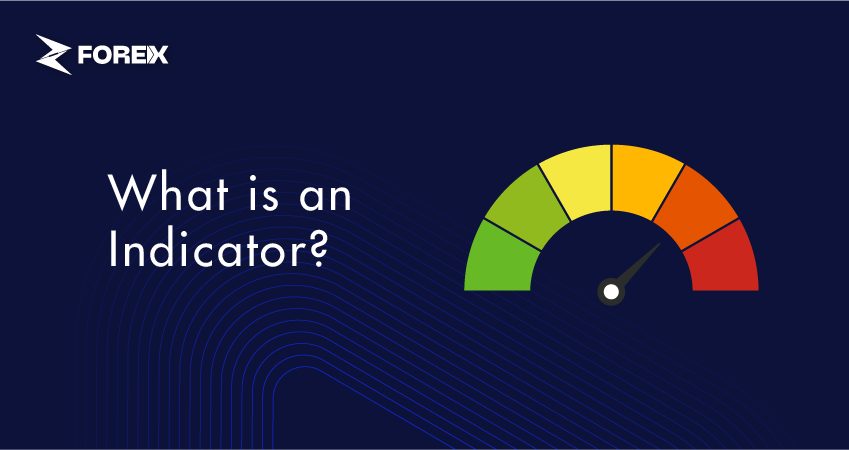
When trading in financial markets, traders use various technical analysis tools to predict future price movements and make strategic decisions. Among these tools, indicators are the most prominent.
An indicator is a set of metrics that helps determine the trend direction or strength of an asset. By providing buy and sell signals, they guide traders in assessing the current state of the market and potential future movements.
Indicators use mathematical calculations to analyze the past price movements of assets such as currency pairs, stock CFDs, indices or commodities to predict future trends.
Traders can use these tools to foresee possible market movements, enabling them to make more informed trading decisions. Indicators are typically added to price charts and combined with current price data to provide clues about how prices might move in the future.
You can find more information about the term indicator in our article.
Indicators are used to analyze price movements and predict future trends. They process market data mathematically, helping traders make more informed decisions.
In general, the use of indicators in the Forex market can be summarized as follows:
Indicators are highly effective in making strategic investment decisions. However, to use these tools effectively, you need to pay attention to several key points:
Indicators are primarily divided into two main categories. Below, you will find detailed information about technical and economic indicators.
Technical indicators analyze past market data such as price movements and trading volumes to predict future price actions. Popular technical indicators include:
Economic indicators are used to measure a country's economic performance and predict future economic conditions. Commonly used economic indicators include:
For more information about popular indicators, you can also check out our content titled Top 10 Trading Indicators Traders Should Know.
Why are indicators important in technical analysis?
Indicators provide traders with information to understand market movements and trends. They help determine the direction, momentum, and strength of price movements. Additionally, indicators generate buy and sell signals, supporting traders in their decision-making processes.
How should I combine indicators?
To use indicators effectively, it's essential to combine different types. For instance, trend (Moving Averages) and momentum indicators (RSI, Stochastic Oscillator) can be used together. This combination helps understand both the direction of the trend and the strength of price movements. Additionally, volatility (Bollinger Bands) and volume indicators (On-Balance Volume) can be combined with other tools for a more comprehensive market analysis.
In which time frames are indicators more effective?
The effectiveness of indicators depends on the time frame used. For short-term traders (e.g., daily or hourly charts), tools that respond quickly are more suitable. Long-term investors (e.g., weekly or monthly charts) prefer indicators that show slower and broader trends.
How should I interpret indicator signals?
Indicator signals serve as guides for buy or sell decisions. For example, when the RSI is above 70, it may signal overbought conditions, and below 30, it may indicate oversold conditions. When Moving Averages cross, a short-term average crossing above a long-term average can be a buy signal, while crossing below can be a sell signal.
In which markets are indicators more effective?
Indicators can be effectively used in various markets. In the Forex market, tools like Moving Averages, RSI, and MACD are widely used to analyze currency pair movements. In commodity markets (e.g., gold, silver, brent or wti oil), Bollinger Bands and ATR are ideal for measuring volatility and price movements. For stocks and stock CFDs, Moving Averages, RSI, and MACD are frequently used for trend and momentum analysis.
 Precious Metals Ratios Against Gold
Precious Metals Ratios Against Gold
Learn what precious metals ratios mean. See what gold-silver, gold-platinum, gold-palladium, and gold-copper ratios tell traders.
Detail How to Share Access to a cTrader Account
How to Share Access to a cTrader Account
Learn how to share access to another cTrader account with a step-by-step guide for web, desktop, and the cTrader mobile app.
Detail How to Use Risk-Reward Tool in cTrader
How to Use Risk-Reward Tool in cTrader
What is the Risk-Reward tool in cTrader and how to use it. Learn with practical examples.
DetailThen Join Our Telegram Channel and Subscribe Our Trading Signals Newsletter for Free!
Join Us On Telegram!